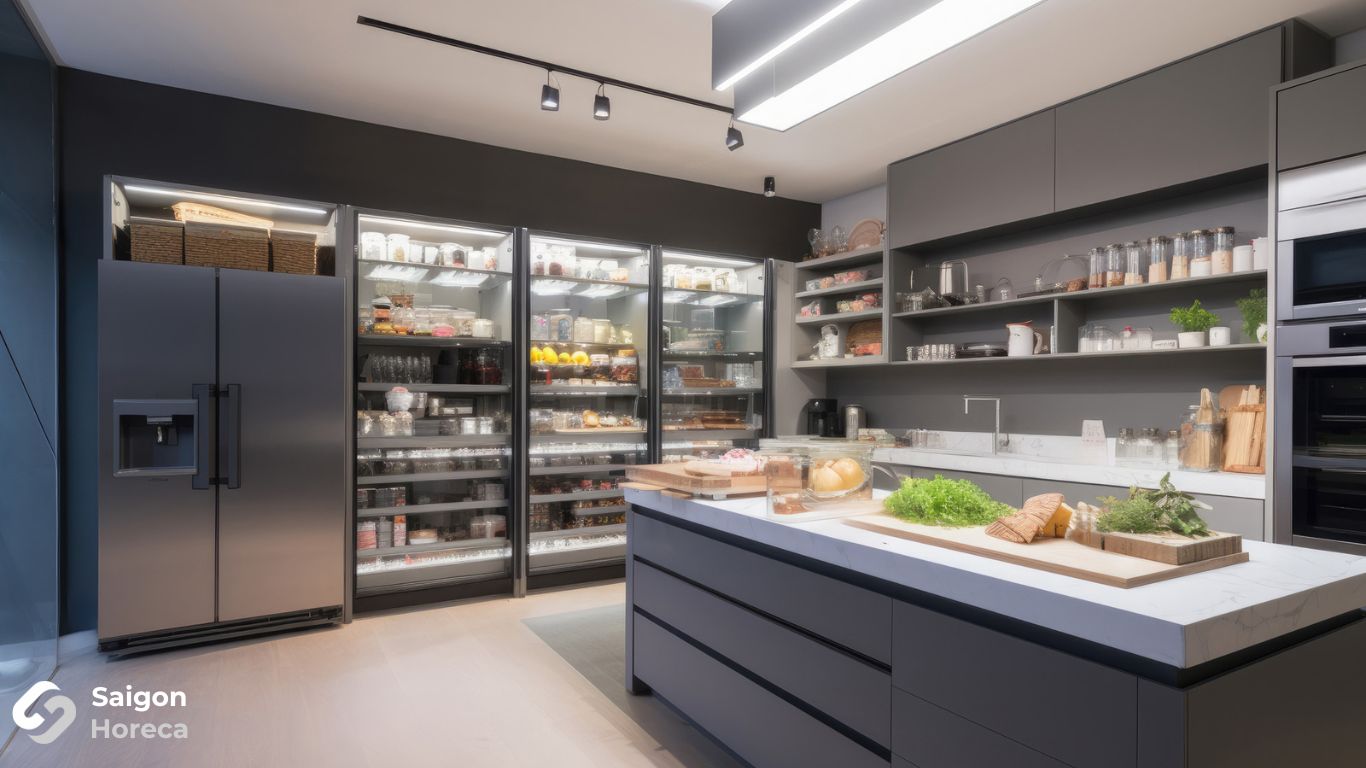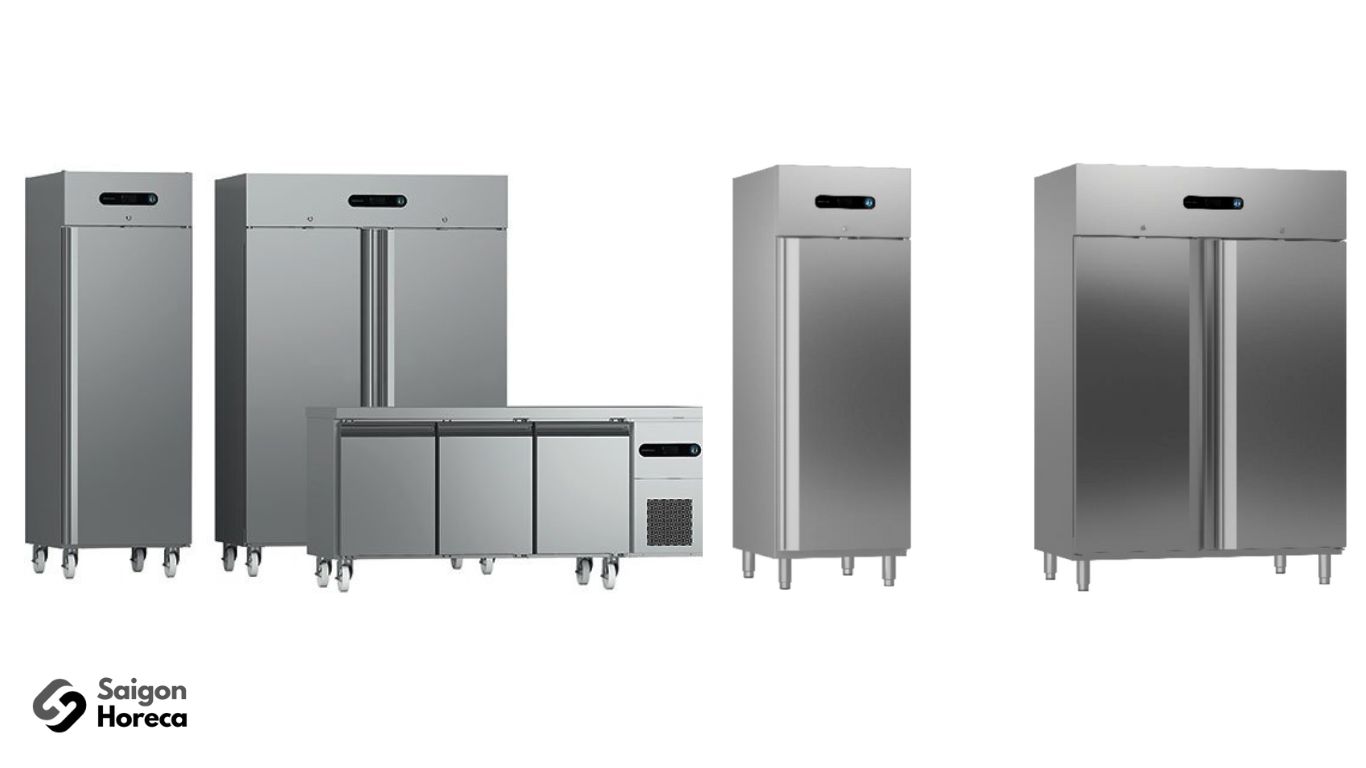50 square meters – it may sound spacious for a living room, but turning it into the heart of a […]
Read More

- News
Tips for Preserving and Cleaning Industrial Refrigerators
- December 14, 2023
When a refrigerator has been in use for a period of time, signs of wear and tear often appear: energy may no longer be as robust as before, operational efficiency decreases, and sometimes unpleasant odors emerge. In this guide, Saigon Horeca will share tips to help you address these issues.
To maintain the refrigerator and tackle these challenges, regular cleaning is crucial. Ensure that the refrigerator is always clean, and tightly control the amount of food inside, avoiding overloading.
In this article
Tips for Cleaning Industrial Refrigerators in Professional Kitchens
During usage, industrial refrigerators often encounter issues such as reduced productivity, decreased operational efficiency, and unpleasant odors. Below is a detailed guide from Saigon Horeca to help you address these problems and efficiently preserve the refrigerator.
1. Disconnect Power and Clear Out Food
First and foremost, ensure that the refrigerator is no longer connected to power before starting the cleaning process. Then, clear out all the food from inside the refrigerator. This helps keep the space inside the refrigerator clean and prevents overloading.
2. Use Appropriate Cleaning Chemicals
Choose a type of cleaning chemical that is not harmful to stainless steel, aluminum, and rubber gaskets. Avoid using strongly scented cleaning agents. Common chemicals like Jantex Sanitiser are a good choice, especially in kitchen and industrial refrigerator environments.
3. Clean the Door and Rubber Gaskets
Pay attention to the rubber gaskets on the door as they can retain moisture and create favorable conditions for bacterial growth. Clean the door and rubber gaskets thoroughly to ensure food safety.
4. Remove All Shelves and Clean the Refrigerator Compartment
Remove all shelves, racks inside the refrigerator, and clean them thoroughly. Restore and dry them before placing them back into the refrigerator.
5. Maintain the Refrigeration Unit
- Maintenance of the condenser includes cleaning the heat exchange surfaces, draining accumulated oil, and checking the calibration of the pump, cooling fan.
- Clean the water tank and drain sediment, check and replace accessories such as water nozzles, water deflectors.
Explore More about Industrial Freezers
Features of Industrial Freezers
Industrial freezers or stainless steel freezers are specially designed refrigeration devices to preserve food at low temperatures, creating an ideal environment for preservation. This environment includes not only temperature and humidity but also pressure and air composition. Industrial freezers are often used in food production processes.
>>> Read more about: Industrial Freezers
Comparison Between Industrial Freezers and Residential Freezers
Industrial freezers mainly differ from residential freezers in terms of usage. Residential freezers typically store much less food than industrial freezers, designed to supply large quantities of food for business purposes.
Additionally, the differences include:
- Size and Structure
Industrial freezer products are designed larger than those used in households because they need more space to store a large amount of food.
- Cooling Capacity
Industrial freezers are usually more powerful and have a powerful compressed air system capable of maintaining a stable temperature even when the freezer is frequently opened.
- External Appearance
Industrial freezers typically have a stainless steel exterior and do not require much decorative design as they are often used in an industrial environment.
- Maintenance and Servicing
Maintenance and servicing of industrial freezers need to be carried out by technical experts to ensure the performance and lifespan of the equipment.
The article provides an overview of industrial freezers and the differences between them and residential freezers. Hopefully, this information will help you make informed decisions for your business.


Tips for Organizing Industrial Freezers
Proper Organization
Organizing food logically
After cleaning your industrial freezer, the next step is to organize everything logically and stably. When the cooling components are completely clean, it’s time to plug them back in and place food on the shelves. When placing food back into the industrial freezer, ensure that you are applying appropriate food organizing processes for industrial kitchen equipment.
Here’s how you should store in your industrial freezer:
- Top Shelf: Ready-to-eat food, produce, butter, spices, and pre-cooked food.
- Second Shelf: Seafood
- Third Shelf: All raw pork and beef
- Fourth Shelf: Ground meat and fish
- Bottom Shelf: Poultry
By placing raw meat and poultry on lower shelves, you prevent water and small bacteria from dripping down and contaminating food below in the industrial freezer.
Useful Tips
There are also several useful things you can do to organize your refrigerator and industrial freezer to make it easier to find what you’re looking for:
- Add labels to any opened products. Adding labels helps keep track of the freshness of food so that you can discard it when it expires.
- Use color-coded bins. Use colored bins for different products. This makes it easy to distinguish them, helping staff quickly find the product they are looking for.
- Implement the “First In, First Out” method. This method ensures that the food placed in first will be used first to ensure freshness. It is an inventory management method to ensure that the freshest food is used first and prevent food from staying in the refrigerator for too long.
Monday - Friday
from 8h00 to 18h00
Số 40 Đường số 6, KDC Melosa Khang Điền, Phú Hữu, HCM.
Contact anytime
Teppanyaki is a renowned Japanese-style open kitchen concept where chefs not only cook meals but also perform their cooking skills […]
Read More




